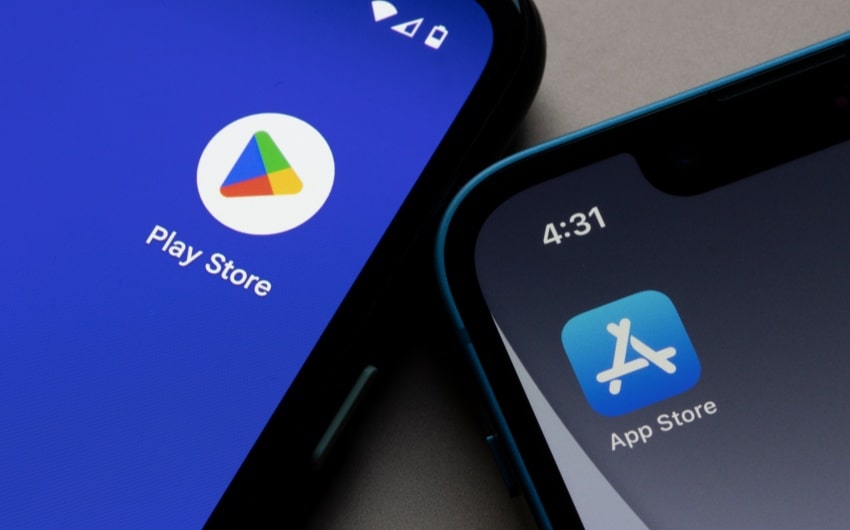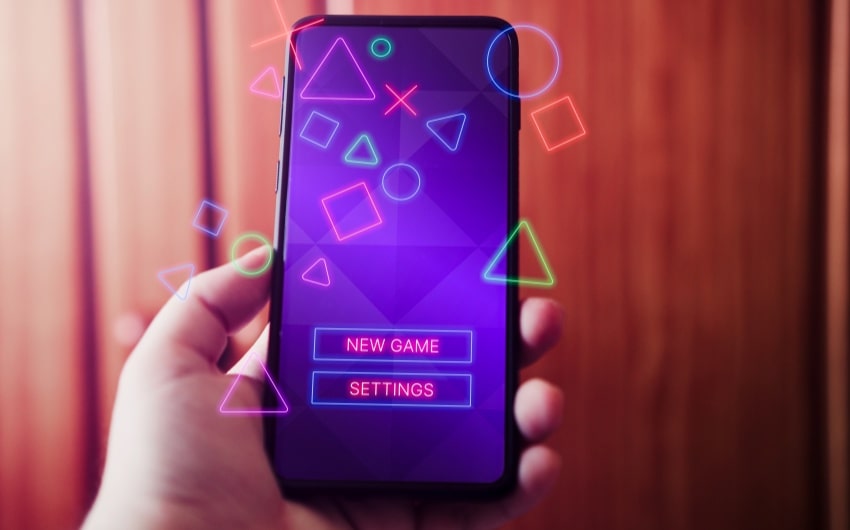Tips to Develop a Powerful Mobile Game Marketing Strategy
Are you ready to launch your mobile game but unsure how to get it noticed? Crafting a mobile game marketing strategy is your key to success. With so many games out there, standing out can be tough, but a solid plan can make all the difference.
Whether you’re an indie developer or part of a big team, knowing how to promote your game effectively will boost your downloads and keep players engaged. In this article, we’ll explore the best ways to market your mobile game, helping you turn your passion into a hit. Let’s dive in!
1. Understanding Your Audience

Identifying Your Target Demographic
Understanding who your players are is the first step in creating a successful mobile game marketing strategy. Start by defining your target demographic. Are you aiming for casual gamers, hardcore enthusiasts, or a niche market? Consider factors like age, gender, location, and gaming preferences. Conducting surveys, researching market trends, and analyzing competitors can provide valuable insights into your potential audience.
Analyzing Player Behavior and Preferences
Once you’ve identified your target demographic, delve deeper into their behavior and preferences. What types of games do they enjoy? How much time do they spend playing games on their mobile devices? Understanding these patterns can help you tailor your game and marketing efforts to meet their needs. Use tools like Google Analytics, social media insights, and in-game analytics to gather data on player behavior.
Tools and Methods for Audience Research
To effectively research your audience, leverage a combination of qualitative and quantitative methods:
Surveys and Questionnaires: Directly ask potential players about their preferences, habits, and expectations. Platforms like SurveyMonkey or Google Forms can help you reach a broad audience.
Focus Groups: Conduct small group discussions to gain deeper insights into player motivations and preferences. This can provide qualitative data that complements survey results.
Social Media Monitoring: Use tools like Hootsuite or Sprout Social to track conversations about similar games and gather insights on what players are looking for.
Competitive Analysis: Study successful games in your genre to understand what works and what doesn’t. Look at their reviews, player feedback, and marketing strategies.
Creating Player Personas
Based on your research, create detailed player personas. These are fictional representations of your ideal players, encompassing their demographics, preferences, gaming habits, and pain points. For example:
Casual Cathy: A 35-year-old mother who enjoys playing puzzle games during her free time. She values easy-to-learn mechanics and quick gameplay sessions.
Hardcore Henry: A 22-year-old college student who spends hours on strategy and role-playing games. He looks for complex gameplay and social interaction within the game.
These personas will guide your marketing efforts, ensuring your strategies resonate with your target audience.
Tailoring Your Marketing Efforts
With a clear understanding of your audience, you can tailor your marketing efforts to appeal to them specifically. Customize your messaging, choose the right marketing channels, and design ad creatives that speak directly to your target players. For instance, if you’re targeting “Casual Cathy,” focus on platforms like Facebook and Instagram where she spends her time, and emphasize the fun and relaxing aspects of your game.
2. Optimize Your App Store Presence
Optimizing your app store presence is crucial for attracting potential players and converting them into loyal users. Here are some key tips to make your game stand out in the crowded app marketplace:
Crafting a Compelling App Description
Your app description is the first thing potential players will read, so make it engaging and informative. Highlight the unique features of your game, its benefits, and why players will enjoy it. Use bullet points for easy readability and ensure your description is free of jargon and typos. Keep it concise but comprehensive, providing just enough detail to pique interest without overwhelming readers.
Choosing the Right Keywords for Better Visibility
Keywords play a vital role in how your app ranks in search results. Conduct thorough keyword research to identify terms that potential players are likely to search for. Use tools like Google Keyword Planner or App Store Optimization (ASO) tools to find high-volume, relevant keywords. Incorporate these keywords naturally into your app title, subtitle, and description to improve visibility. However, avoid keyword stuffing, as this can lead to penalties from app stores.
Designing Eye-Catching Icons and Screenshots
Visual appeal is critical in attracting users. Your app icon should be unique, easily recognizable, and reflective of your game’s theme and style. Invest in professional design to ensure it stands out.
Screenshots and videos are also essential in showcasing your game’s graphics, gameplay, and features. Include high-quality screenshots that highlight the most exciting aspects of your game. Use captions to explain what players are seeing and why it’s fun or important. If possible, create a short, engaging video trailer that provides a quick overview of the gameplay and main features.
Utilizing App Previews and Videos
App previews and videos can significantly boost your app’s appeal. Create a captivating preview video that highlights the core gameplay mechanics, special features, and unique selling points. Keep the video short and dynamic, ideally under 30 seconds, to maintain viewers’ attention.
Encouraging Reviews and Ratings
Positive reviews and high ratings can greatly influence potential players’ decisions to download your game. Encourage satisfied players to leave reviews by implementing in-game prompts at appropriate times, such as after completing a level or receiving a reward. Respond to reviews, especially negative ones, to show that you value player feedback and are committed to improving their experience.
Localizing Your App Store Listing
To reach a global audience, consider localizing your app store listing into different languages. This includes translating the app description, keywords, and any other text in your app store presence. Localization makes your game more accessible to non-English speaking players and can significantly increase downloads in international markets.
3. Leverage Social Media

Social media is a powerful tool for promoting your mobile game and connecting with your audience. By effectively using social media platforms, you can build a community, engage with players, and drive downloads. Here are some tips to leverage social media for your mobile game marketing strategy:
Creating Engaging Content for Different Platforms
Each social media platform has its unique characteristics and audience, so tailor your content accordingly. On Facebook, share updates, behind-the-scenes content, and player testimonials. Use Facebook Live for real-time interactions, such as Q&A sessions or gameplay demonstrations.
Instagram is great for posting visually appealing images and short videos. Utilize Stories and Reels to showcase gameplay snippets, upcoming features, and player shoutouts. Twitter is perfect for quick updates, news, and engaging questions. Use relevant hashtags to increase visibility and engage with the gaming community.
On TikTok, create short, entertaining videos that highlight exciting gameplay moments, tips, and tricks. Collaborate with popular TikTok creators to reach a broader audience.
YouTube is ideal for longer gameplay videos, tutorials, and developer diaries. Use YouTube Shorts for quick, engaging clips that capture key aspects of your game.
Using Social Media Ads Effectively
Paid advertising on social media can significantly boost your game’s visibility. Target your ideal players using the advanced targeting options available on social media platforms, such as demographics, interests, behaviors, and specific gaming preferences. Create visually appealing ads that capture attention with high-quality images, videos, and compelling copy that highlights your game’s unique features and benefits.
Experiment with various ad formats like image ads, video ads, carousel ads, and story ads. Define your campaign goals, whether it’s increasing downloads, driving engagement, or boosting awareness, and track your progress. Continuously monitor the performance of your ads using analytics tools to track key metrics like click-through rates, conversion rates, and cost per install, and optimize your campaigns based on the data to maximize ROI.
Collaborating with Influencers and Streamers
Influencers and streamers have dedicated followings and can help you reach a wider audience. Look for influencers and streamers who align with your game’s genre and target audience. Check their engagement rates and authenticity before reaching out. Approach influencers with a personalized message and offer them exclusive access to your game, in-game rewards, or monetary compensation in exchange for promoting your game.
Allow influencers to create content that feels authentic to their style, as authentic endorsements resonate better with their audience and can lead to higher engagement. Track the performance of influencer campaigns using unique links, promo codes, or tracking pixels, and measure the increase in downloads, engagement, and overall brand awareness resulting from the collaboration.
Engaging with Your Audience
Social media is not just a broadcasting tool; it’s also a platform for interaction. Engage with your audience to build a loyal community by responding promptly to their comments, messages, and mentions. Address their queries, thank them for their support, and acknowledge their feedback.
Organize live events such as Q&A sessions, gameplay live streams, and contests to encourage participation and reward active community members. Highlight content created by your players, such as fan art, gameplay videos, and testimonials. Sharing user-generated content fosters a sense of community and encourages more players to contribute.
By leveraging social media effectively, you can create a strong online presence for your mobile game, engage with your audience, and drive more downloads. Consistently monitor your social media performance and adapt your strategy to keep your community engaged and excited about your game.
4. Build a Community
Building a community around your mobile game is essential for long-term success. Engaging with players and fostering a sense of belonging can lead to higher retention rates and word-of-mouth promotion. Here’s how to do it:
Engaging with Players on Forums and Social Media
Start by actively participating in gaming forums and social media groups where your target audience hangs out. Join discussions, answer questions, and share updates about your game. Being present and approachable makes players feel valued and heard.
Hosting Events and Contests
Organize events and contests to keep your community excited and engaged. This could be anything from in-game challenges and tournaments to fan art contests. Offer rewards like in-game items, shoutouts, or even exclusive access to new features. Events and contests create buzz and encourage players to interact with each other and with you.
Providing Regular Updates
Keep your community informed with regular updates about the game. Share news about upcoming features, bug fixes, and other developments. Regular communication helps maintain interest and shows that you’re committed to improving the game based on player feedback.
Responding to Feedback
Show that you value player input by responding to their feedback and making improvements based on their suggestions. Whether it’s through social media comments, reviews, or direct messages, acknowledge their concerns and let them know what actions you’re taking. This builds trust and loyalty.
Creating a Safe and Positive Environment
Foster a safe and positive environment where players feel comfortable interacting. Set clear community guidelines to prevent toxic behavior and ensure everyone feels welcome. Moderate discussions to keep them respectful and constructive.
Highlighting User-Generated Content
Encourage players to create and share their own content, such as fan art, gameplay videos, and stories. Highlight this content on your social media channels and in-game. This not only showcases your appreciation for your community but also inspires others to contribute.
5. Cross-Promote with Other Games

Cross-promotion is a smart way to reach new audiences by partnering with other games. Here’s how to do it effectively:
Partner with Complementary Games
Find games that complement yours rather than compete directly. Look for games in a similar genre or those that share your target audience. Reach out to these developers to propose a partnership where you promote each other’s games within your apps.
Create Mutual Promotions
Design promotions that benefit both games. This could include in-game ads, special bonuses for players who download both games, or featuring each other’s games on social media. Make sure the incentives are attractive and easy to understand.
Use Ad Networks
Join ad networks that specialize in cross-promotion. These platforms can help you find partners and manage your campaigns efficiently, reaching a wider audience with minimal effort.
Track and Optimize
Monitor the success of your cross-promotion efforts. Use analytics tools to track downloads, engagement, and player retention. Adjust your strategies based on what works best to continually improve your campaigns.
6. Offer Incentives and Rewards
Offering incentives and rewards is a powerful strategy to attract new players and keep existing ones engaged. Here are some essential tips for effectively using incentives and rewards in your mobile game marketing strategy:
Pre-Launch Registration Incentives
Create excitement before your game launches by offering pre-registration incentives. This can include exclusive in-game items, early access to features, or special titles for those who sign up before the official release. Promote these incentives through social media and your website to build anticipation and ensure a successful launch.
In-Game Rewards to Boost Engagement
Keep players engaged with regular in-game rewards. Implement daily login bonuses, achievement rewards, and event-specific prizes to encourage players to return frequently and stay invested. Make sure the rewards are valuable and varied to maintain interest.
Limited-Time Offers and Promotions
Boost player activity with limited-time offers and promotions. This could be special discounts, double rewards weekends, or exclusive event items. Clearly communicate the duration and benefits of these offers to create urgency and encourage quick action.
Referral Bonuses
Encourage players to invite their friends by offering referral bonuses. Reward both the referrer and the new player with valuable in-game items or currency. This strategy helps attract new players and strengthens your community.
Seasonal and Themed Events
Host seasonal or themed events that offer unique rewards and content. Tie these events to real-world holidays or special occasions within your game. Offer exclusive rewards to motivate players to participate and keep the game fresh.
7. Prepare for Post-Launch

Preparing for the post-launch phase of your mobile game is crucial for maintaining player interest and ensuring long-term success. Here are some key strategies to effectively manage and enhance your game after it goes live:
Regular Updates and Events
Keep your game fresh with regular updates and events. Introduce new features, levels, and challenges to maintain player interest. Host in-game events and limited-time challenges with special rewards to keep players engaged and excited.
Handling Player Feedback
Actively listen to player feedback from reviews, social media, and in-game surveys. Address issues promptly with bug fixes and patches. Respond to reviews and comments to show players that you value their input and are committed to improving their experience.
Scaling Marketing Efforts
Continue promoting your game post-launch to reach new audiences. Increase your ad spend, explore new marketing channels, and refine your targeting based on initial campaign data. Consistent marketing helps sustain momentum and drive growth.
Community Building
Build a strong community around your game. Create and manage online communities on platforms like Discord or Reddit. Engage with players by participating in discussions, hosting Q&A sessions, and sharing exclusive content. A vibrant community fosters loyalty and generates word-of-mouth promotion.
Analyzing Game Performance
Use analytics tools to track key performance metrics like retention rates and in-game purchases. Regularly review this data to understand player behavior and identify areas for improvement. Data-driven decisions help optimize the game’s performance and player experience.







